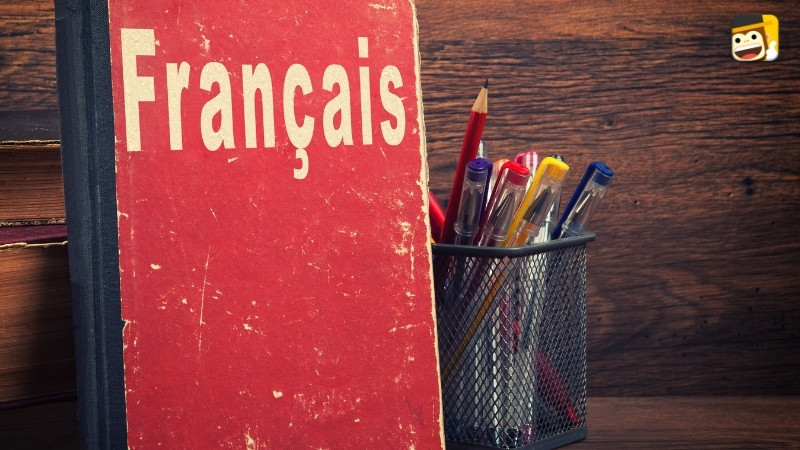Are you looking for easy ways to say beautiful in French? The French language has many words that can describe something nice or indicate a beautiful person.
While one can use one or two words to express this specific feeling, there are many other ways to say it, which can add elegance and shades of meaning to a sentence. This article covers the best creative ways to say beautiful in French.
What Are The Best Easy Ways To Say Beautiful In French?
In general, you use the word belle to say beautiful in French when using the feminine version, which means you are referring to feminine nouns or persons. But, if you are referring to masculine nouns or people, you can use beau.
The French grammar when using adjectives is a bit challenging. But to make it simple, the words describing people or objects change when used in feminine and masculine forms and when used with a name in the single or plural form.
Here are a few examples of how to say beautiful in French:
- Belle – Handsome (feminine object or person)
- Beau – Handsome (masculine object or person)
- Joli – Pretty or attractive
- Mignon – Cute
- Ravissant – Delightful
- Canon – Good-looking
- Adorable – Lovely
- Magnifique – Gorgeous
- Splendid – Splendid
- Sublime – Sublime
Masculine And Feminine Forms In French

As a general rule of thumb, in the French language, you transform a masculine noun into a feminine noun by changing the ending.
For example:
But there are exceptions. In fact, if the masculine noun already ends in -e, no e is added.
For example:
There are other variations to consider, depending on how the French words end. Here are the rules. If the male version ends in:
- -f, then it will become a -ve in the feminine version
- -x, then it will become a -se
- -eur, then it will become a -euse
- -teur, then it will become a -teuse or -trice
- -an, then it will become a -anne
- -ien, then it will become a -ienne
- -on, then it will become a -onne
- -re, then it will become a -ère
- -te, then it will become a -ette
- -el, then it will become a -elle
Here are some examples of use:
- Un veuf (masculine) becomes une veuve (feminine) – A widower/a widow /
- Un Parisien (masculine) becomes une Parisienne (feminine) – A Parisian /
- Le cadet (masculine) becomes la cadette (feminine) – The youngest child /
What Is The Difference Between French And English Adjectives?
There is a big difference between the French and English adjectives, which is that French adjectives need to change to agree with the noun gender and number. This means that each adjective can be:
- Masculine
- Feminine
- Singular
- Plural
For example, one French word for beautiful is “Joli.” Here is how it can change when used in different ways:
But there are exceptions too. The most obvious is the word belle. Here is how it changes in the different forms:
How Do You Position French Adjectives?

While in English, you see that the adjective always precedes the noun, in French, the adjective can be placed before and after the noun depending on the meaning.
The general rules are the following:
- Descriptive adjectives are placed after the noun they need to modify
- Adjectives that have to do with beauty, size, good and bad are generally placed before the noun
- Non-descriptive adjectives usually are placed before the noun
Descriptive adjectives are those words that express color, nationality, religion, personality, taste, and similar.
Examples:
Example Sentences Using Beautiful In French
Now that you know some basic grammar regulations, here are examples of French expressions using the word beautiful in different forms:
- Il est beau – He is handsome
- Un beau home – A handsome man
- Vous êtes belle – You are beautiful
- Une belle femme – A beautiful woman
- Tu es belle – You’re pretty
- Vous êtes belles – You are beautiful (used for more than one person – feminine form)
- Vous êtes beaux – You are beautiful (used for more than one person – masculine form)
- Le chien mignon – Cute dog
- Bel ami / Belle amie – Nice friend (masculine adjective) / Nice friend (feminine adjective)
- Belle robe – Beautiful dress
- Jolie maison / Belles maisons – Beautiful house / Beautiful houses /
- Bel écureuil – Beautiful squirrel
- Bel oiseau – Beautiful bird
- Tu es magnifique – You are magnificent
- Une belle fille – A beautiful girl
- Beau garçon – Handsome boy
Would you like to learn more about the French language? Or add more words to your vocabulary?
Learn French With Ling App!

Learning French or any other language can be challenging without a path to follow. This is why the Ling App can help you. This language learning tool has all the necessary to guide a person to fluency.
With Ling, it is possible to learn the grammar, pronunciation, verbs, and sentence structures and add numerous words to the vocabulary. Furthermore, it is possible to know the inside of the French culture or the tradition of any culture.
Ling provides 60+ language options if you wish to learn more than one language or improve your skills, and you can learn on the go with the mobile application.
To learn vocabulary to speak French, check out our great blog posts: How To Say Funny In French and Basic French Pronouns.
What are you waiting for? Download Ling App from App Store and Play Store for free!


































































